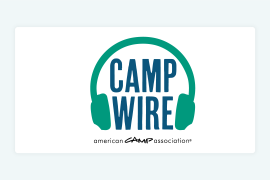School breaks are not the time to take a break from learning. Unfortunately, this is what often happens, resulting in a significant drop in students’ mastery of core concepts. The National Summer Learning Association reports that students lose an equivalent of two months of their grade-level math computational skills over the summer, and students from low-income families also lose the same equivalency in reading achievement. As an educator, it’s discouraging to see students spend all school year making gains in their education, only to return from extended breaks a few steps behind, causing teachers to spend valuable time re-teaching last year’s content before they introduce new material. This is entirely avoidable. While school breaks are certainly a time to relax, they are not a time to stop learning. There are many things students can do to ensure they return to school as sharp as when they left.
The key to education—especially in critical STEM (science, technology, engineering, and math) subjects—is activity-based learning that makes concepts relevant in real-world, meaningful ways. In Project Lead The Way (PLTW) classrooms, for example, students learn the concepts of velocity, speed, lift and drag by building an airfoil that meets certain constraints. In third grade, PLTW Launch students learn about forces, axels, and levers, and apply these concepts to design a simple machine to rescue an animal that has fallen into a trench. Lessons like these show students the relevancy of their learning and engage and inspire them to continue learning. But learning like this doesn’t have to be confined to a classroom.
Common activities present real-world learning experiences for students. During the summer, a swimming pool can teach students about buoyancy; a baseball game can teach about velocity and drag. PLTW keeps a great list of summer STEM activities to help combat the summer learning loss. During any time of the year, parents and children who enjoy baking together can turn the measurements into a math lesson on fractions. There are also websites and apps, sites like Kahn Academy and PBS’ Design Squad, which provide engaging lessons and activities for students. Many tools can be accessed at a community library if a computer isn’t available in the home.
Camps are another great way to continue learning. Organizations like Boy Scouts, Girl Scouts, the YMCA, Boys and Girls Clubs of America, and local zoos, or museums offer exciting and engaging opportunities for students. The American Camp Association's Find a Camp service is a great resource for summer camps and activities, providing more than 2,300 accredited camps across the U.S. From there, you can search by subject or activity to find out which camp or session is best for your student.
Learning does not have to cease when the last class bell rings. The responsibility to continue learning during school breaks rests with each one of us. When it comes to learning loss, we can change course. We can help students have an enjoyable and relaxing break, all while continuing to learn.
Dr. Vince Bertram is the President and CEO of Project Lead The Way and the New York Times bestselling author of One Nation Under Taught: Solving America’s Science, Technology, Engineering, and Math Crisis. Connect with him on Twitter @vincebertram.
